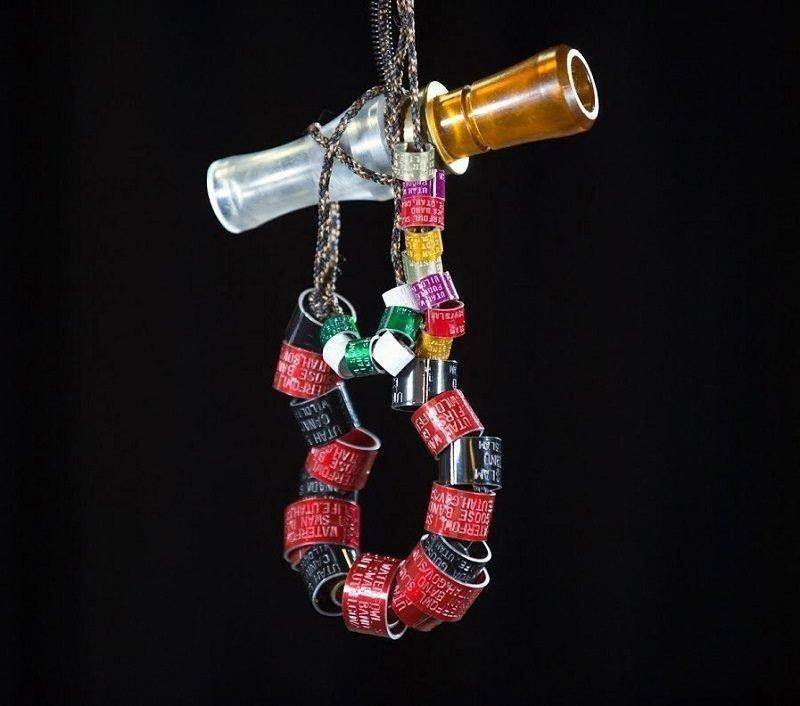Program has generated $30,000 in three years
The next time you hunt or watch birds at two waterfowl management areas in northern Utah, some new opportunities will be waiting for you. And you can thank waterfowl hunters for both of them.
Blair Stringham, migratory game bird coordinator for the Division of Wildlife Resources, says the DWR started the state’s Waterfowl Slam to give hunters an additional way to fund on-the-ground habitat projects that help waterfowl and other birds.
“Hunters already provide funding through the hunting licenses they buy and excise taxes they pay on ammunition and other items they hunt with,” Stringham says. “Without that funding, Utah’s wetlands wouldn’t be nearly as productive for wildlife as they are.”
Stringham says the Waterfowl Slam provides yet another way for hunters to help. “In return,” he says, “they can earn leg bands they can place on call lanyards or anywhere else they’d like to keep them.”
Stringham says all of the money raised through the slam goes directly into on-the-ground work that benefits waterfowl. “Every penny that’s raised goes directly back to helping the birds,” he says.
Waterfowl Slam memberships cost $20 for hunters older than 17, and $10 for those 17 years of age and younger. Memberships must be renewed annually.
“What’s neat about the program is that for every dollar a hunter pays to join, the federal government gives us three dollars in return,” Stringham says. “For example, if you’re an adult, and you pay the $20 fee to join the program, the DWR, in return, gets $60 in federal funds. So, by paying $20, you’re actually providing $80 for on-the-ground work that helps waterfowl and other wildlife.”
You can learn more about the slam at www.wildlife.utah.gov/utah-waterfowl-slam.
Projects
Utah’s Waterfowl Slam started in 2014. The following projects have been funded using money raised through the slam:
Farmington Bay Waterfowl Management Area – J-dike Unit
The J-dike project—a brand new wetland for birds—was completed late this summer. The impoundment is about 280 acres in size. It’s directly west of the Unit 1 dike. The newly constructed dike has five water control structures that allow managers to move water in and out of the unit.
Jason Jones, manager of the Farmington Bay WMA, says the unit is currently infested with phragmites. The plants will be chemically treated by helicopter in August 2017.
“I’m slowly filling the unit with water now,” Jones says, “but we can only fill it half full this fall because the newly constructed dike needs time to settle.”
Jones says the impoundment will provide good hunting this season, though, for those who want to venture beyond the phragmites and look for the many open pockets that exist in the unit.
“In the future,” he says, “when the phragmites are removed, the unit should provide excellent habitat for birds and great hunting for hunters.”
Ogden Bay Waterfowl Management Area – North Run
This project, which will create a brand new impoundment on the north end of the Ogden Bay WMA, starts Sept. 26.
Rich Hansen, Ogden Bay WMA manager, says the area where the project will happen is more than 100 acres in size. Phragmites and salt cedar currently dominate the area.
Hansen says the existing roads on North Run will be raised two feet, and a new linear dike—more than 6,000 feet long—will be built.
“The raised roads and the new dike will allow us to impound water in the area and better control the phragmites,” he says.
Currently, the only way to flood the area is through rainfall and spring runoff.
“With the installation of water control structures in the new dike,” he says, “we can flood the area to depths that will allow us to better control phragmites and properly manage the area.”
Making the habitat better will result in more birds—for hunters and bird watchers—at the north end of the Ogden Bay WMA.

